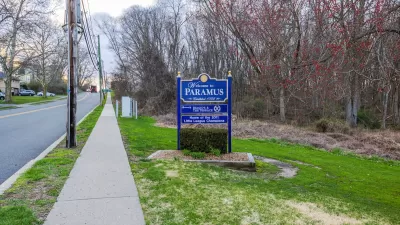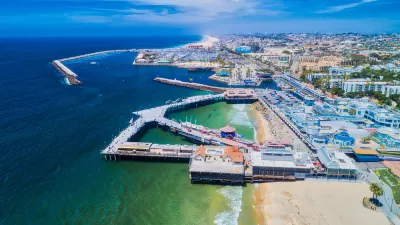A long-standing tradition of opposing multifamily housing construction continues to hamper housing production even as demand for affordable options grows.

Pointing to a recent example from Shawnee, Kansas, which recently banned “co-living”—as defined by four or more unrelated adults living together—in response to the growth of companies that convert single-family homes into multi-tenant rentals, Danielle McLean comments that “Municipal zoning regulations that restrict the number of unrelated adults living in a single unit are common across the U.S.” This poses a problem, McLean writes, as the housing market grows increasingly unaffordable.
While cities defend these restrictive regulations as a way to prevent “corporate landlords buying up housing and turning it into unaffordable rentals,” housing experts criticize them “for blocking the development of housing, particularly new affordable housing options.”
New development often faces opposition from multiple fronts: while some homeowners worry about property values and neighborhood character, housing advocates express concerns about gentrification and displacement. McLean describes the “time-honored tradition” of opposition to multifamily housing, which often strangles housing production and exacerbates the affordability crisis, as well as recent efforts by states such as Massachusetts and California to fight this “aversion to change” by mandating less restrictive zoning and land use policies.
Meanwhile, experts repeatedly remind policymakers that to have a significant impact on housing production, eliminating single-family zoning restrictions is just “part of a broader suite of changes that eliminate other restrictions such as setback and building height requirements and parking limits.”
FULL STORY: The ‘time-honored tradition’ of opposing affordable multifamily housing in US cities

Planetizen Federal Action Tracker
A weekly monitor of how Trump’s orders and actions are impacting planners and planning in America.

San Francisco's School District Spent $105M To Build Affordable Housing for Teachers — And That's Just the Beginning
SFUSD joins a growing list of school districts using their land holdings to address housing affordability challenges faced by their own employees.

The Tiny, Adorable $7,000 Car Turning Japan Onto EVs
The single seat Mibot charges from a regular plug as quickly as an iPad, and is about half the price of an average EV.

Seattle's Plan for Adopting Driverless Cars
Equity, safety, accessibility and affordability are front of mind as the city prepares for robotaxis and other autonomous vehicles.

As Trump Phases Out FEMA, Is It Time to Flee the Floodplains?
With less federal funding available for disaster relief efforts, the need to relocate at-risk communities is more urgent than ever.

With Protected Lanes, 460% More People Commute by Bike
For those needing more ammo, more data proving what we already knew is here.
Urban Design for Planners 1: Software Tools
This six-course series explores essential urban design concepts using open source software and equips planners with the tools they need to participate fully in the urban design process.
Planning for Universal Design
Learn the tools for implementing Universal Design in planning regulations.
Smith Gee Studio
City of Charlotte
City of Camden Redevelopment Agency
City of Astoria
Transportation Research & Education Center (TREC) at Portland State University
US High Speed Rail Association
City of Camden Redevelopment Agency
Municipality of Princeton (NJ)





























